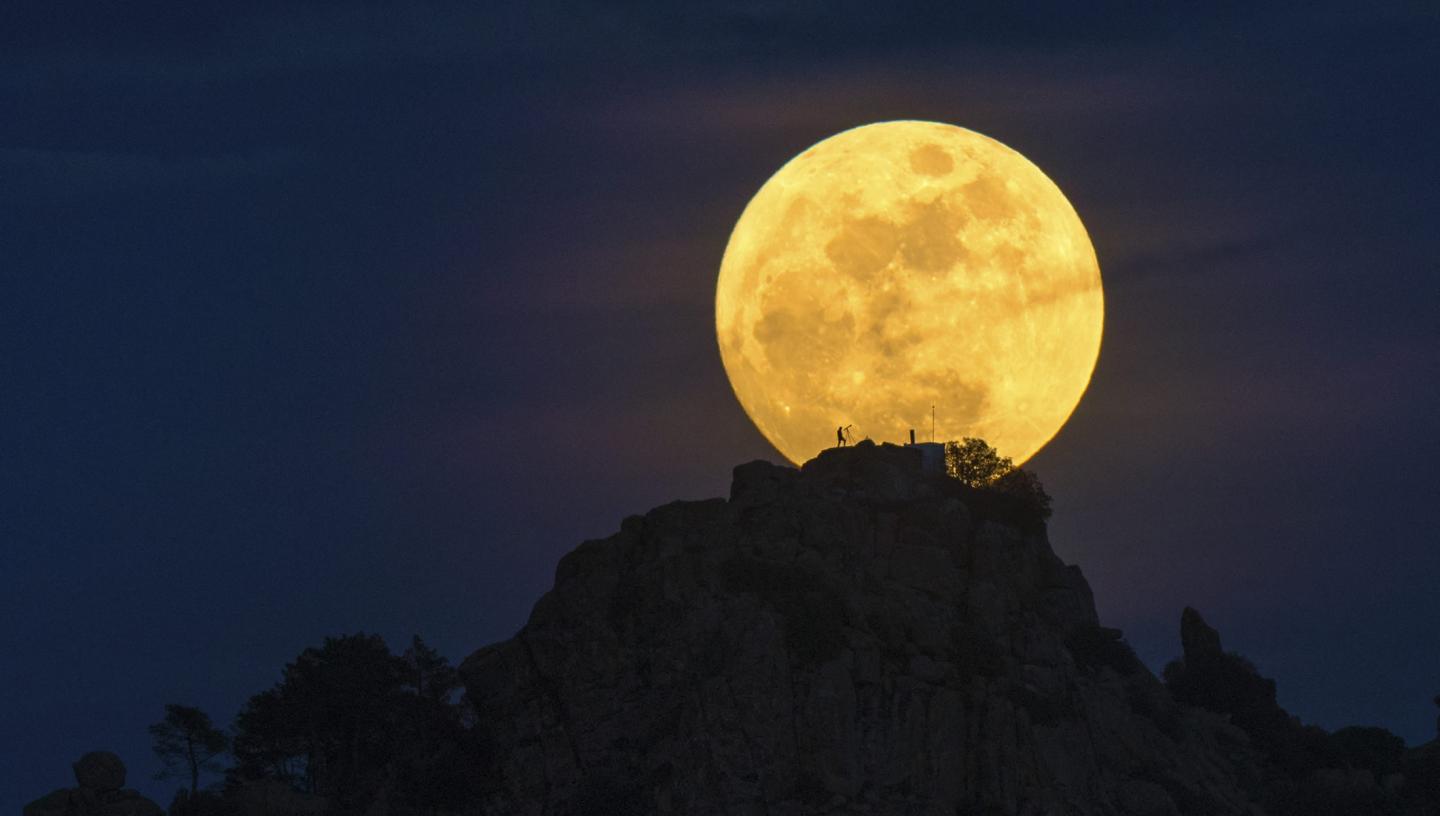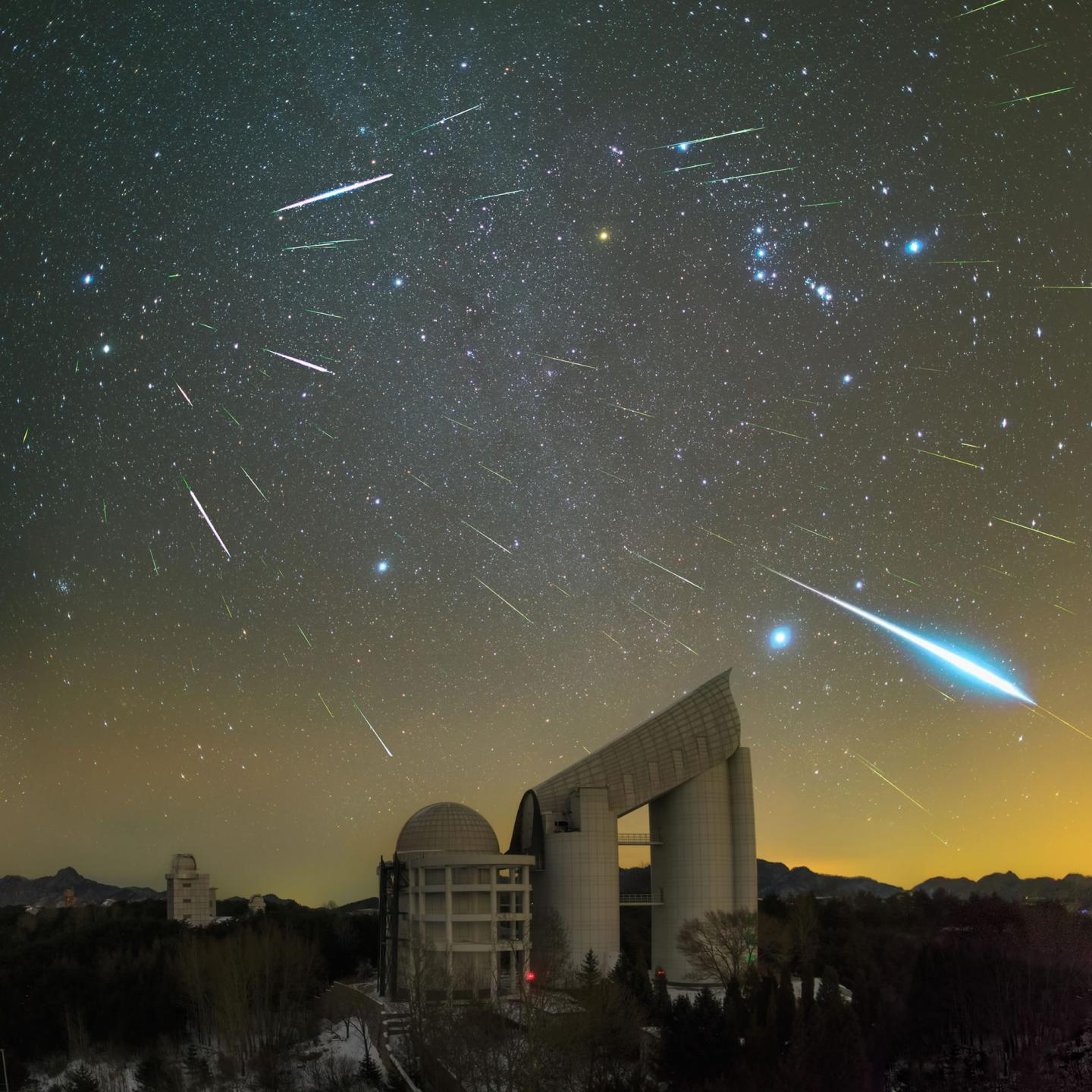
30 Nov 2016
December’s highlights include this year’s final Supermoon and the Geminid meteor shower. (All times given are for London and will vary for other parts of the UK.)
2 Dec – look for Venus only 6 degrees away from the waxing crescent Moon, just after sunset at 4pm. This is a great opportunity to look at the craters near the terminator of the Moon, where the bright and dark sections meet. You will also see the right half of Venus lit up – Venus orbits the Sun within the Earth’s orbit so we see it go through phases like the Moon.
5 Dec – you can see the Moon, Mars and Venus close to each other in the southern sky after sunset – a fantastic photo opportunity! Mars appears pink/orange in the sky.
13-14 Dec – The spectacular Geminid meteor shower peaks on the early morning of Wednesday 14th. Meteor showers are caused by the dust left from comets as they orbit the Sun – as we plough through this debris, the dust particles interact with the gases in our atmosphere and create bright streaks of light.
At the peak of the Geminid shower you may see up to 120 meteors per hour, hitting the atmosphere at a tremendous speed of 130,000 km/h. Most of the meteors appear to radiate outwards from the constellation Gemini. The best time to see them is from midnight until dawn.

14 Dec – also on the 14th the full Moon will be at perigee (its nearest point to Earth) and almost 7% wider and about 15% brighter than an average full Moon – often referred to as a Supermoon.
21 Dec – The winter solstice takes place on the 21st – this is mid-winter’s day and around this time we experience the shortest period of daylight, only 8 hours in the UK. The northern hemisphere is tilted away from the Sun; 6 months later we will be tilted towards the Sun and we will experience summer and longer periods of daylight – 16 hours in London.
Find out more about solstices and equinoxes
22 Dec – a few hours before sunrise look for Jupiter just 2.4 degrees south of the waning crescent Moon. If you have binoculars put them on a tripod and try looking for the 4 Galilean moons, Io (closest), Europa, Ganymede and Callisto.
Get prepared for stargazing
When looking at faint objects such as the stars, nebulae, the Milky Way and other galaxies it is important to allow your eyes to adapt to the dark – so that you achieve night vision. Allow 15 minutes for your eyes to become sensitive in the dark and remember not to look at your mobile phone or any other bright device when stargazing. If you are using a star app on your phone switch on the red night vision mode.
Need a stargazing telescope or decent binoculars? Check out our range of high-quality observing equipment recommended by Royal Observatory astronomers:
See our range of observing equipment
Share your astronomy pictures
Don’t forget to share your pictures of the night sky with us on Twitter @ROGAstronomers or via Facebook. Come and see amazing astronomical images of the night sky in our free Insight Astronomy Photographer of the Year exhibition, now open at the Royal Observatory.
Visit the free Insight Astronomy Photographer of the Year exhibition
See more of the Christmas night sky
Come on a fantastic seasonal tour of the night sky in our Christmas Stars planetarium show, join one of our special evenings of live astronomy, or get the lowdown on life in space in our Royal Observatory Christmas Lecture.
See the Christmas Stars planetarium show